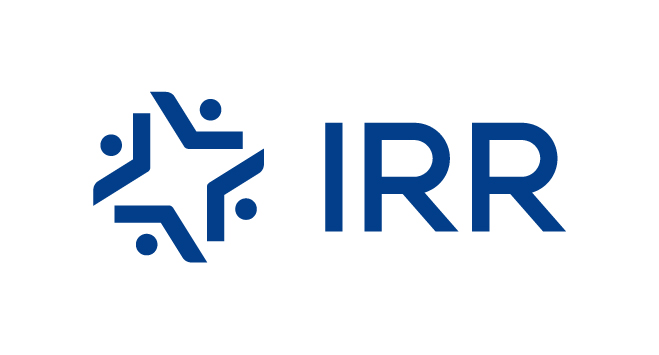Our History
The Institute of Race Relations has been in continuous operation for over nine decades and will celebrate its centenary in 2029.
Throughout these years, the IRR has not deviated from its founding objectives: to work for peace, goodwill, and practical cooperation between the various sections of the people of South Africa; and to initiate, support, assist, and encourage investigations that may lead to greater knowledge and understanding of the racial groups and of the relations that subsist or should subsist between them.
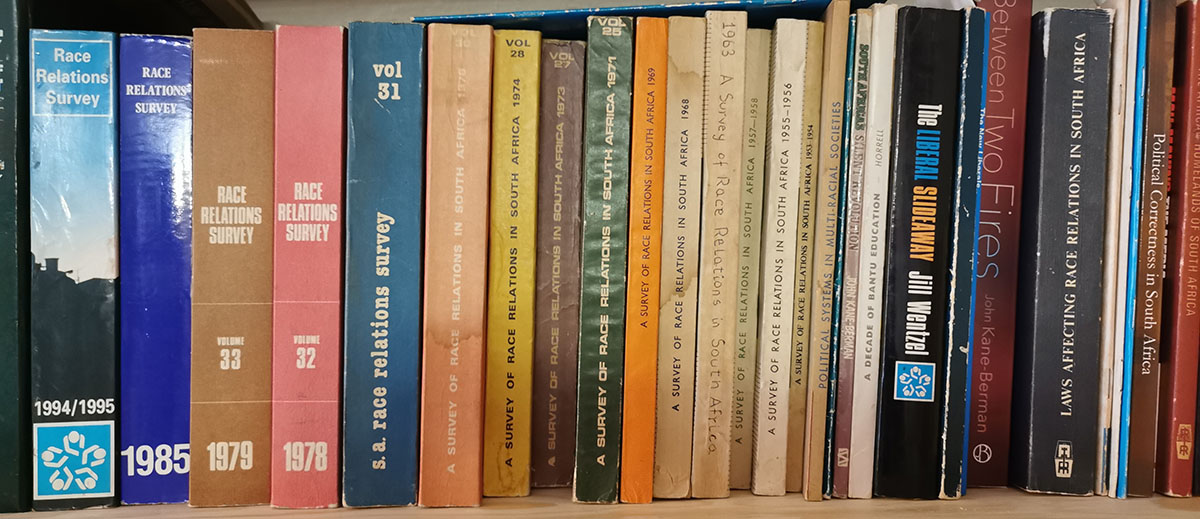
Founding during the years of segregation
The IRR was founded on 9 May 1929 by John David Rheinallt Jones, Charles Templeman Loram, Howard Pim, Edgar Harry Brookes, Johannes du Plessis, Davidson Don Tengo Jabavu, JH Nicholson, and JG van der Horst, at the home of Reverend Ray Philips in Johannesburg. Thomas Mackenzie, Rheinold Frederick Alfred Hoernlé, and Leo Marquard also contributed to the founding of the Institute.
The IRR was born largely out of the many multiracial ‘joint councils’ and the long individualist tradition of South African liberalism. ‘Joint councils’ were community associations that held multi-racial conferences throughout South Africa, to the end of encouraging and facilitating interracial understanding and cooperation.
Like the joint councils, the IRR never adopted a staff or membership colour bar.
The IRR began publishing its flagship Survey of Race Relations annually in 1947. This publication later became the South Africa Survey and continues to be published under that name today, as well as being published as the Socio-Economic Survey under the auspices of the IRR affiliate, the Centre for Risk Analysis. The Survey became the go-to reference for anyone seeking to understand and explain South Africa, with Nelson Mandela quoting from the 1963 edition during his ‘I am prepared to die’ speech at the Rivonia Trial in 1964.
In January 1942, the prime minister, Jan Christiaan Smuts, admitted at an IRR conference that ‘segregation has fallen on evil days’. His United Party government showed nominal signs of intending to reform its racial policy during the 1940s. That most of South Africa’s political efforts were dedicated to the country’s involvement in the Second World War delayed domestic reforms. Nonetheless, it became evident that change was in the air when in 1946 the government’s Native Laws Commission (known as the Fagan Commission) proposed significant liberalisation of segregation and influx-control policies.
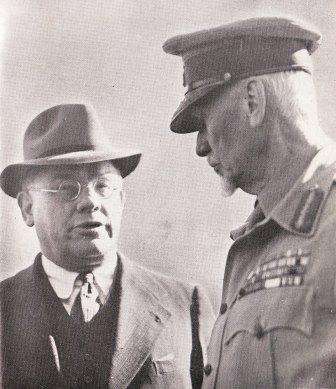 The deputy prime minister at the time, Jan Hendrik Hofmeyr, was regarded as the informal leader of South Africa’s fledging non-racial liberal movement. Hofmeyr was vice president of the IRR from 1944 up until his death in 1948. That year also signalled the end of the United Party government of Smuts, and the beginning of 46 years of National Party rule.
The deputy prime minister at the time, Jan Hendrik Hofmeyr, was regarded as the informal leader of South Africa’s fledging non-racial liberal movement. Hofmeyr was vice president of the IRR from 1944 up until his death in 1948. That year also signalled the end of the United Party government of Smuts, and the beginning of 46 years of National Party rule.
Apartheid
Classical liberalism has long been the foundation of the Institute’s work and ethos. In the 1949/50 edition of the IRR Survey, wherein IRR President Agnes Hornlé’s speech distinguishing liberalism from communism was summarised, the IRR proclaimed that the ‘aims of Liberalism are the aims of the Institute.’
The IRR began administering the Isaacson Foundation Bursary Fund in 1953. Between 1981 and 2022, at the peak of the IRR’s bursary programme’s activity, bursaries to the value of R279 million were awarded to 3,900 graduates. Nelson Mandela was among the early recipients of an IRR bursary. The programme was transferred to StudyTrust, a professional bursaries administrator, in late 2022.
In April 1957, the IRR Executive Committee warned that the preceding decade’s National Party rule had led to ‘a mounting tide of resentment of authority’ among excluded groups. This was due to the apartheid policy’s ‘negation of right principle’ that undermined ‘common loyalties to our country’ and conflicted ‘with our economic structure’. In July of the same year, in response to government threats of prohibiting inter-racial meetings in ‘white’ areas, the IRR issued the following statement:
‘The National Executive of the South African Institute of Race Relations, whose members are drawn from every part of the country, has decided unanimously that the Institute should continue exactly as before to do the work it has always done for better race relations in South Africa. It considers the possibilities that its work for multi-racial co-operation might be interfered with, and decided that it would not be frightened by vague threats or be deterred by undefined dangers.’
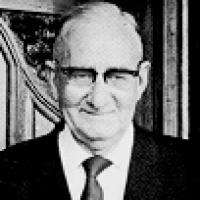 That same year, at the opening of the IRR’s new headquarters at Auden House in Braamfontein, IRR President Leo Marquard described the Institute as ‘a place where people can meet – not as guardian and ward, not as master and servant, not as Black and White, but quite simply as free men and women who love freedom and will never surrender it.’ In a booklet published by the IRR in 1965, Liberalism in South Africa, Marquard explained ‘the sources and tenets of classical liberalism’ and demonstrated ‘how South Africa’s race problems can only be solved through a liberal approach.’
That same year, at the opening of the IRR’s new headquarters at Auden House in Braamfontein, IRR President Leo Marquard described the Institute as ‘a place where people can meet – not as guardian and ward, not as master and servant, not as Black and White, but quite simply as free men and women who love freedom and will never surrender it.’ In a booklet published by the IRR in 1965, Liberalism in South Africa, Marquard explained ‘the sources and tenets of classical liberalism’ and demonstrated ‘how South Africa’s race problems can only be solved through a liberal approach.’
In 1962, Parliament adopted the controversial General Law Amendment Act, which included trade union activity within the definition of ‘sabotage’ subject to a minimum of five years’ imprisonment and with a reversed burden of proof. The IRR criticised this legislation as inhibiting ‘freedom of speech, association, and assembly’, and warned that it would be perceived as ‘a further measure to entrench White supremacy’. The result would be ‘a harmful effect on the already tense inter-racial situation’.
‘Necessary economic, political and social change can only be brought about by the freely conducted activities of individuals and groups. The Institute considers that the definitions of sabotage, by their vagueness, constitute an ever-present intimidation and will have the effect of hampering the public expression of popular opinion, legitimate demonstrations, and other democratic efforts to bring about changes which many regard as desirable.’ - IRR statement in response to the General Law Amendment Bill, 1962
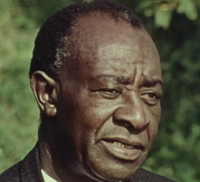 Oliver Deneys Schreiner, President of the IRR at the time who had recently retired as a Justice of the Supreme Court, issued an additional statement criticising the bill for falling foul of the standard of the rule of law. ‘The Rule of Law means that law should rule’, argued Schreiner, ‘in other words, that the life, liberty, property, freedom of speech and movement of the individual should not be endangered or restricted by State action…’
Oliver Deneys Schreiner, President of the IRR at the time who had recently retired as a Justice of the Supreme Court, issued an additional statement criticising the bill for falling foul of the standard of the rule of law. ‘The Rule of Law means that law should rule’, argued Schreiner, ‘in other words, that the life, liberty, property, freedom of speech and movement of the individual should not be endangered or restricted by State action…’
In 1972 the government appointed a commission under the chairmanship of Alwyn Schlebusch to investigate the anti-apartheid organisations, National Union of South African Students, the University Christian Movement, the Christian Institute, and the IRR. The commission’s work paved the way for the promulgation of the Affected Organisations Act of 1974.
The IRR Council resolved that the Schlebusch Commission was a ‘totally unsuitable vehicle for a task of this nature’ and that an independent judicial commission should instead have been appointed. The essence of the IRR’s criticism of the political commission – a select committee of Parliament – was that it met in private, without the affected entities being allowed to test the evidence against them.
‘The Institute also objects strongly to the totalitarian concept of security implicitly adopted by the Commission in terms of which almost all a man’s beliefs, opinions, and actions (including the most personal and private of his beliefs and conduct) are deemed relevant to state security.’ - IRR Council resolution, 16 May 1973
The IRR ceased its cooperation with the commission and instructed the executive director, Frederick van Wyk, to refuse cooperation unless subpoenaed. Officials of the IRR who subsequently refused to testify before the commission were charged, and one was jailed.
In 1979, at the IRR’s celebration of its first 50 years, Alan Paton set out the organisation’s view for the future:
‘As the Institute enters its fifty-first year, it will continue to play its part in its struggle against that estrangement which is the greatest enemy of hope. In the last fifty years, did we get anywhere? Did we achieve anything? Did we change anything? I have no doubt that we did. But if we didn’t do anything else, we did our duty.’
The liberal slideaway
Throughout the years, liberals such as IRR associate Arthur Keppel-Jones (in his case, by 1950) warned that the indignities of segregation and apartheid being imposed on people for having the ‘wrong’ skin colour would in due course invite violent reaction. History proved these warnings prescient, with violent uprisings and actions beginning in the late 1960s and reaching their climax in the 1980s.
Large-scale violence would continue until the mid-1990s, when apartheid formally ended.
Toward the end of the apartheid era this violent action against the state brought about a schism among the previously relatively united group of non-racial liberals in South Africa. The term ‘liberal slideaway’ was coined by Jill Wentzel at an IRR seminar in March 1986. Wentzel followed this seminar with a book, entitled The Liberal Slideaway.
Despite warning that apartheid would lead to violence, liberals themselves did not condone revolutionary violence: change in South Africa had to take place along peaceful and constitutional lines (a process that was fully underway during the 1980s) to safeguard the rule of law and the potential of equal prosperity for all. Some liberals, however, in the words of Wentzel, became ‘timid, guilt-ridden, and lacking in confidence’ to continue expounding liberal ideas, fearing being labelled ‘right-wing’ (‘the psychological equivalent of necklacing’) by revolutionaries or their apologists.
Revolutionary violence was therefore condoned by this latter group. The liberal slideaway can be summed up in the contemporary notion that one may not criticise the oppressed for how they react to their oppression. The slideaway occurred around the same time that the seeds of what is today known as ‘critical race theory’ were being sowed in the West, representing a politically correct capture of liberalism.
The IRR held out and took issue with the revolutionary violence being committed not only against the apartheid state and its apparent constituencies, but against other anti-apartheid groups. The IRR, relying on the work of Dr Anthea Jeffery, was at the forefront of exposing the so-called ‘people’s war’ that certain revolutionary organisations perpetrated upon innocent civilians and rivals simply to entrench their own political hegemony.
Democratic era and our future
The IRR’s raison d’être did not fall away with the coming of non-racial democracy. As IRR chief executive, John Kane-Berman, noted at the time of the political transition, the task for liberals would now become significantly more difficult than it had been during the preceding era.
‘With the change of government and constitution in 1994, many people thought our work was done. Not so fast, I said: when parties committed to revolutionary methods and ideas come to power, liberal democracy is not the only possible outcome. In any event, the price of liberty, always, everywhere, is eternal vigilance. So the Institute has played a critical role in relation to the present government as it did to the previous one.’ - - John Kane Berman (1946-2022), Between Two Fires, 2017, Jonathan Ball
The IRR has been at the forefront of opposing destructive policies of the post-1994 democratic government. This includes labour laws from the late 1990s and early 2000s that reintroduced race discrimination and caused significant unemployment, and the efforts by government in the late 2000s, 2010s, and 2020s, to weaken private property rights.
The IRR has a long pedigree. It remains a dynamic organisation that retains its core commitment to non-racialism and classical liberalism as it navigates South Africa’s everchanging circumstances in pursuit of a prosperous future marked by ‘peace, goodwill, and practical co-operation’ between all South Africans.
